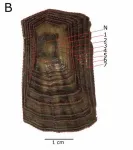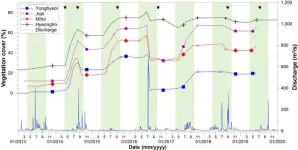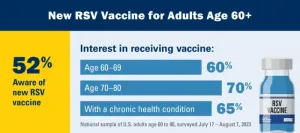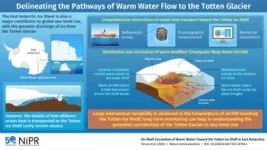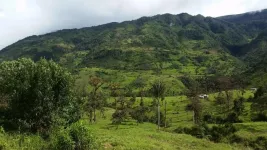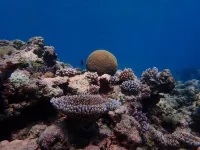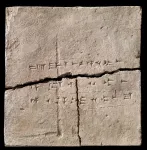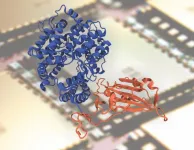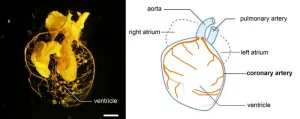(Press-News.org)
Chestnut Hill, Mass. (8/22/2023) – In a breakthrough in liver transplantation that may lead to the ability to connect more living donors and patients, a new matching system designed by a team led by Boston College economists enabled the world’s first four-way liver exchange and a cascade of additional matches, researchers reported recently in the American Journal of Transplantation.
The results show that expanding the capacity of the donor-patient matching mechanism beyond the traditional 2-way change – matching two patients with two donors – can increase the number of transplants that can be matched among a larger group of participants, according to the study, co-authored by BC Professors of Economics Tayfun Sonmez and Utku Unver.
Specifically, in 2022 the liver paired exchange (LPE) facilitated one four-way exchange and four two-way exchanges for a total of 12 living donor liver transplants (LDLT) performed at the Liver Transplant Institute at Malatya Inonu University, in Turkey.
“With only 2-way exchanges, only 10 of these patients would receive a LDLT,” the researchers report. “The number of LDLTs from LPE can be increased by developing the capacity to perform larger than 2-way exchanges in either high-volume centers or multicenter programs.”
Since June 2022, the program has been using a matching procedure that maximizes the number of living donor liver transplants (LDLTs) to the patients in the pool subject to the ethical framework and the logistical constraints of the program.
Sonmez and Unver are recognized world-leading experts and developers of matching mechanisms, particularly in the area of kidney exchange and transplantation. Their work in “matching markets” has also focused on how to improve K-12 school choice algorithms and the assignment of cadets to military specialties in the U.S. Army.
Living donor liver exchanges are rare. Following the increased role of kidney paired exchange (KPE) in transplantation in the mid 2000s, similar liver paired exchange (LPE) programs have been launched in a few countries. In January of this year, a national pilot LPE program was established in the U.S.
Four years ago, Sonmez and Unver started working with Sezai Yilmaz MD, the institute director and a renowned surgeon, to launch one of the few living-donor liver exchange programs in the world, Unver said.
The work carries special meaning for Sonmez. The LPE program at Malatya Inonu University is named after his late wife, Dr. Banu Bedestenci Sonmez, who died in 2016 following a long battle with breast cancer. The donor exchange system now bears the title the “Banu Bedescenci Sonmez Cross Transplant Program.”
Sonmez said naming the exchange program was a fitting tribute to his wife, a dentist in their native Turkey who gave up her career to move with her husband to the U.S.
"My beloved wife, Banu Bedestenci Sonmez, made a huge sacrifice and left her homeland to support my aspirations to make the world a better place with my research,” said Sonmez, who joined the Boston College economics faculty in 2005. “Until that time a successful dentist in Istanbul, she became a housewife in the US, leaving both her career and social life behind. As my policy aspirations started to materialize soon after taking a position at Boston College, Banu was diagnosed with breast cancer. Despite the severe health challenges life threw her way, she never stopped supporting my dreams.”
The Covid-19 pandemic delayed the launch of the program, but has since made history, said Sonmez and Unver.
“Last summer it facilitated several life-saving donor exchanges, including a world-first four-way liver exchange,” Sonmez said. “Last month we published the first results of the Banu Bedestenci Sönmez Liver Exchange Programour collaboration in the American Journal of Transplantation."
The two economists noted they were glad to make a difference in their home country, particularly at a hospital close to the country’s southeast region, which was devastated by a 7.8 magnitude earthquake in February.
Said Unver: “The Institute already has the world's second-largest living donation transplant program volume, and our exchange program will hopefully help many other people with end-stage liver disease to live.”
END
Researchers at the Korea Institute of Civil Engineering and Building Technology (KICT, President Kim Byung-suk) published their findings on the drastic short-term alterations in rivers accompanied by shifts in vegetation and geomorphology drawn from actual on-site investigation and analyses and not from model simulations.
The alteration processes from a 'white river,' characterized by riverbeds with no vegetation including bare sandbars, to a densely vegetated 'green river' with grass and trees, have been ...
COLUMBUS, Ohio – Train elementary school students how to be creative and you can help increase their resilience in the face of real-life problems, new research suggests.
In a small study, researchers trained third, fourth and fifth graders to use literary techniques such as perspective shifting, counter-factual (what if) thinking and causal (why) thinking to improve creativity in dealing with difficulties.
The techniques helped kids come up with new, creative and practical ways to solve problems, said Angus Fletcher, lead author of the study and a professor of English at The Ohio State University and member of the university’s Project ...
The first Americans over age 60 just started rolling up their sleeves to get vaccinated against respiratory syncytial virus, or RSV, now that brand-new vaccines have started to arrive at pharmacies and clinics.
Millions more older adults may do the same in coming weeks and months, a new University of Michigan poll suggests, as they seek protection against a virus that is especially good at infecting older lungs.
But nearly half of older adults do not know about the new RSV vaccines that received approval earlier this year, the poll finds. And some groups of older adults show much less interest in getting ...
PULLMAN, Wash. — A shipping container that can test passive cooling systems could help researchers and builders find carbon-free ways to keep people cool in extreme temperatures.
Washington State University researchers created the 60 square-foot chamber to test passive systems that use wind towers along with water evaporation instead of electricity to cool spaces.
Finding cooling methods that don’t require putting more greenhouse gases into the air is crucial to helping a growing population adapt to climate change, said Omar Al-Hassawi lead author of the study in the journal, Energies.
“Cooling is ...
One of the most feared effects of global warming is the rise in sea level caused by the melting of polar continental ice. In fact, polar researchers have been working towards raising the awareness of this impending threat. The scientific fraternity relies on sampling the remote regions of Artic and the Antarctic continental shelves to estimate these risks. They can then use these measurements to model and understand the processes that drive the melting of ice at these locations and determine the extent of meltwater that will eventually flow ...
Birds native to the tropical Andes, many of which cannot be found anywhere else, are threatened by increasing agricultural development in the region. A new study details how the resulting habitat loss affects specific species and lays out possible ways to protect birds from human-driven disturbance.
The researchers combined a meta-analysis of papers on birds across the Andes with five years of fieldwork in Peru, revealing that open farmlands result in up to a 60% decline in the number of species in an area. Before this work, there was little data on which species were declining or by how much.
“The vast majority ...
Coral reefs in one part of the Pacific Ocean have likely adjusted to higher ocean temperatures which could reduce future bleaching impacts of climate change, new research reveals.
A Newcastle University-led study focused on the Pacific Island nation of Palau and has shown that historic increases in the thermal tolerance of coral reefs are possible. The results demonstrate how this capacity could reduce future bleaching impacts if global carbon emissions are cut down.
Drawing on decades of field observations, the scientists modelled many possible future coral bleaching trajectories for Palauan reefs, ...
For the first time, a group of researchers have successfully extracted ancient DNA from a 2,900-year-old clay brick.
The analysis provides a fascinating insight into the diversity of plant species cultivated at that time and place, and could open the way to similar studies on clay material from other sites and time periods.
The results are published today in Nature Scientific Reports.
Currently housed at the National Museum of Denmark, the clay brick originates from the palace of Neo-Assyrian king Ashurnasirpal II, in the ancient city of Kalhu. Known today as the North-West palace in Nimrud (modern-day northern Iraq), its construction began around 879 BCE. ...
In a recently published article featured on the cover of the Biophysical Journal, Dr. Rafael Bernardi, assistant professor of biophysics at the Department of Physics at Auburn University, and Dr. Marcelo Melo, a postdoctoral researcher in Dr. Bernardi's group, shed light on the transformative capabilities of the next generation of supercomputers in reshaping the landscape of biophysics.
The researchers at Auburn delve into the harmonious fusion of computational modeling and experimental biophysics, providing a perspective for a future in which discoveries ...
Coronary arteries are a vital part of the human heart, providing it with oxygen-rich blood so that it can work. By comparing the hearts of mammals, birds, reptiles, fish and frogs, a multi-institutional team of researchers appears to have found evidence that the structure of our hearts evolved in a stepwise process from fish, through amphibians to reptiles to mammals. When animals evolved from living in the water to living on land, a significant remodeling of the blood vessels to the heart occurred, enabling survival without gills. Understanding ...

